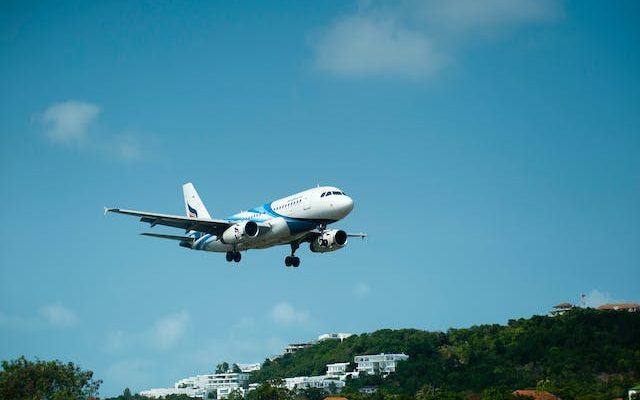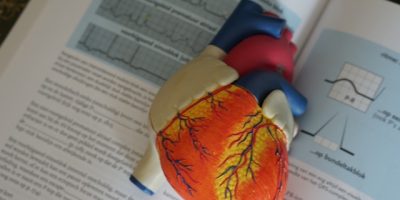Delving into the complexities of aviation, the need of monitoring vibrations in the air reveals a vital component for guaranteeing secure and effective air transportation. Beyond the fascination of soaring through the skies, the meticulous monitoring of vibrations is essential for maintaining the structural integrity of aircraft.
In this exploration, we unravel why staying attuned to these vibrations is not just a technical necessity but a vital practice that contributes to the reliability, safety, and overall passenger experience in the dynamic world of aviation.
Ensuring Passenger Safety
Detecting and addressing vibrations early on through advanced monitoring systems helps identify potential mechanical issues that could compromise flight safety. These systems play a crucial role in analyzing and interpreting vibration data, enabling aviation professionals to take proactive measures to maintain the structural integrity of the aircraft.
By utilizing state-of-the-art technology like Aces systems, airlines can enhance their ability to preemptively address concerns related to vibrations, reinforcing the commitment to passenger safety and ensuring a secure and reliable air travel experience.
Increasing the Lifespan of Aircraft
Major mechanical breakdowns are less likely to occur when potential wear and tear on crucial components is systematically monitored and promptly remedied. This proactive approach reduces the need for expensive and frequent replacements while simultaneously improving flight safety.
By implementing effective vibration monitoring strategies, airlines can optimize the longevity of their aircraft, ensuring a more sustainable and economically viable operation. This systematic maintenance approach helps mitigate the impact of aging, ultimately supporting the aircraft’s ability to operate reliably and safely for an extended period.
Enhancing Operational Efficiency
Maintaining a vigilant approach to aviation vibrations significantly contributes to enhancing overall operational efficiency in the aviation industry. By consistently monitoring and addressing vibrations, flight operations can achieve a smoother and more fuel-efficient performance. This proactive management minimizes unnecessary stress on aircraft engines, optimizing their functionality and contributing to a reduction in maintenance costs.
Efficient vibration control strategies not only enhance the aircraft’s fuel efficiency but also lead to improved engine performance, aligning with the broader goal of achieving cost-effective and environmentally sustainable aviation operations. Airlines adopting these measures not only prioritize economic considerations but also contribute to a more eco-friendly and streamlined aviation industry.
Minimizing Unplanned Downtime
Closely tracking vibrations and promptly addressing any identified issues, airlines can implement predictive maintenance strategies. This proactive approach helps prevent sudden mechanical failures and reduces the risk of unexpected aircraft downtime due to unscheduled maintenance.
By adopting predictive measures, airlines can ensure a more reliable and consistent availability of aircraft for scheduled flights. This not only enhances operational efficiency but also contributes to a more punctual and reliable air travel experience for passengers.
Since unplanned downtime has a direct impact on the dependability and reliability of airline services, minimizing it is a major objective in the aviation sector.
Compliance with Regulatory Standards
Regular monitoring of aviation vibrations is a fundamental aspect of meeting these standards. By consistently tracking vibrations and addressing any deviations from the prescribed norms, airlines demonstrate their commitment to adhering to regulatory requirements.
Compliance ensures that aircraft undergo necessary inspections and maintenance checks, preventing potential safety risks and upholding the industry’s high safety standards. Airlines that prioritize compliance not only contribute to the overall safety of air travel but also foster trust among passengers and regulatory authorities, reinforcing the integrity of the aviation sector as a whole.
Improving Passenger Experience
Addressing aviation vibrations directly impacts the overall passenger experience by minimizing disturbances and ensuring a smoother and more comfortable journey. By actively managing and resolving vibration-related issues, airlines can create a more pleasant atmosphere within the aircraft.
Reduced noise and discomfort for passengers improves their trip experience. Proactive measures to enhance passenger comfort also contribute to the overall reputation of the airline, as satisfied passengers are more likely to choose and recommend the carrier.
Airlines that prioritize the well-being and comfort of passengers not only meet the expectations of travelers but also contribute to building a positive and enduring image in the competitive aviation industry.
Conclusion
By monitoring and addressing these subtle movements, you contribute to the overall reliability and longevity of aircraft, ensuring the safety of passengers and crew. The proactive approach to handling vibrations not only minimizes unplanned downtime but also enhances operational efficiency, making air travel more cost-effective.
As you navigate the skies, remember that your commitment to tracking aviation vibrations plays a crucial role in meeting regulatory standards and creating a more comfortable and enjoyable experience for passengers.














Comments